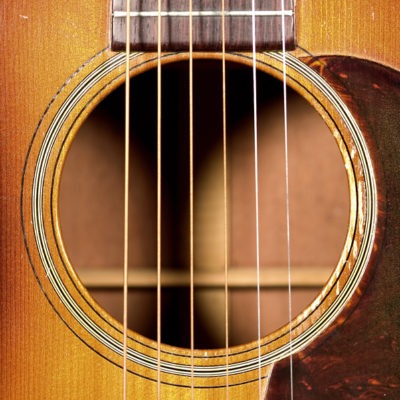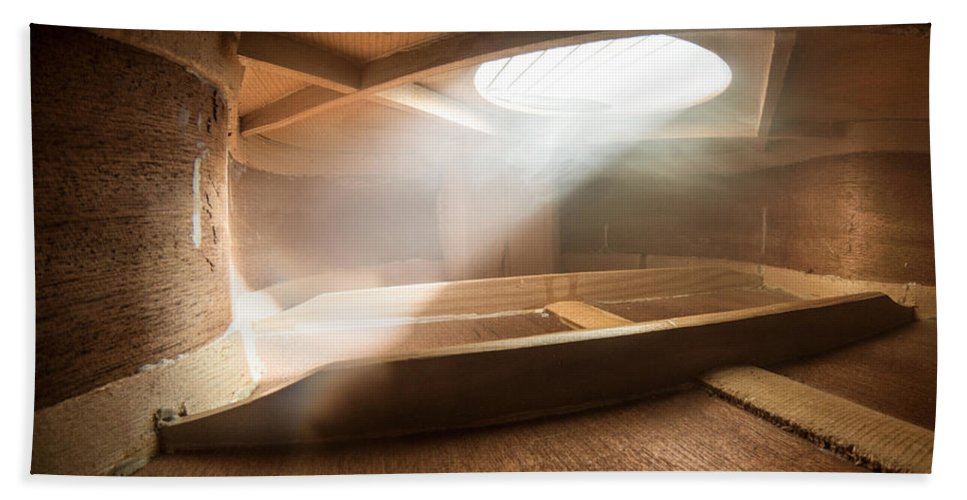Nothingness is not nothing at all, so it is physical, but not in the sense of constant presence. Nothingness is disturbing. It is there in a mind-independent sense; it is part of what is given. ~~ Timothy Morton
 The soundhole of a guitar is a void, an essential space in the body of the instrument, without which it cannot sing its song.
The soundhole of a guitar is a void, an essential space in the body of the instrument, without which it cannot sing its song.
And yet it is not that which produces the sound, but rather a portal through which the guitar breathes, demonstrating to the guitarist that the instrument is indeed a living thing.
In a message dated 10/14/98 1:37:19 AM, a dear reader wrote:
I was wondering if you could help me find out if the guitar’s sound hole must be in its usual spot and cannot be moved, but if it can be moved, how much can it move. My second question is does the sound hole have to be a certain size. How big or how small can it be? Finally, does the sound hole have to be a circle? Can it be a square, octagon, etc.?
 First, let’s look at the really big question: Why have a soundhole at all?
First, let’s look at the really big question: Why have a soundhole at all?
Most folks will say that the soundhole is there to allow the sound out of the guitar, and project it forward. They will usually start mentioning “orchestra shells” somewhere in the conversation.
Actually, this is a misconception. The purpose of the hole is simply to allow the air pressure inside and outside the guitar cavity to equalize as the top is vibrated by the strings. Were the guitar a closed wooden box, the top couldn’t “pump” as it should, and the sound would be extremely muffled.
In fact, you can place the hole on the *side* of the guitar, with the top having no soundhole at all, and you would not notice a significant difference in the volume or tone of the instrument. Several contemporary luthiers are positioning the soundhole on the side, typically on the top side, facing the player.
The size of the soundhole needs to be large enough to accommodate the volume of air displaced as the guitar is played. This quantity will vary depending on the size of the instrument and the flexibility of the top, so some guitars will require just a bit more of an opening than others.
You may have noticed so-called “jazz” guitars (aka archtop guitars), which have “f-holes”, inspired by the viol family of instruments. At first glance, you might think that f-holes provide less air passage than the circular shape of flattop soundholes, but if you put a pencil to it, such is not the case.
In fact, after a long weekend of exhaustive experimentation and scientific calculation (the gory details of which I will spare you), I have determined that the size of contemporary soundholes is just about right.
Many modern luthiers and guitar manufacturers are experimenting with the shape and position of the soundhole. The Adamas line (made by Ovation) even goes so far as having several very small soundholes scattered on either side of the body near the neck, in what Ovation considers to be an attractive arrangement.
As you can see, the soundhole(s) do not *need* to be any particular shape at all.
Which begs the question: Why, then, is it almost always round, and so very near the center of the guitar?
Answer: For one, it’s simple in design and easy to cut.
But the greatest advantage to the round soundhole is that it allows relatively easy access to the interior of the instrument in case repairs are ever needed. Say, fixing a loose brace, or installing a pickup system. Without a round soundhole positioned where it is, such basic repairs and modifications become a nightmare. Which is why you’ll pay more to have a good guitar tech tackle the job of repairing something on the inside of an archtop. In extreme cases, the top of the instrument must be removed entirely in order to gain sufficient access to the interior.
So the round design is not only simple and elegant, but yields to the skilled hand of the guitar tech. Moreover, it facilitates losing your pick inside the box. More on that later.
Even more interesting than the actual soundhole (which takes, what, a minute or two to cut?) is the intricate inlay which often borders it on finer instruments. A well-done handmade rosette is often considered to be the coup-de-gras of a good guitar—truly works of art. Here’s an excellent, in-depth video by luthier Michael Thames of Santa Fe NM on how rosettes are created:
A traditional rosette is made from very thin strips of fine woods of various colors (several inches long, but only 1/16″ square or smaller), stacked and glued together in a specific pattern to form “logs”, which are then thinly cross-sectioned. These chips are painstakingly inlaid one by one into the top of the guitar around the soundhole—sort of resembling a butcher-block in microcosm—and then the top is sanded smooth. Very tricky handiwork, and one of the more beautiful examples of fine woodworking to be found anywhere.
How to Easily Remove a Lost Pick from Inside a Flattop Guitar
1. Hold the guitar *securely* in both hands (one hand holding the neck, the other holding the body), with the top of the guitar facing straight up. To be extra safe, hold the guitar over a bed or couch.
2. Looking through the soundhole, shake the instrument gently (tilting the box as needed), and bounce the pick around till it’s resting on the inside back, centered right beneath the soundhole.
3. Being careful to keep control of the instrument, cup the neck in one hand near the body joint, and with the other hand by the strap pin in the lower bout (if present), or otherwise near the bottom center of the body. Quickly flip the guitar over 180 degrees, so that the top is now facing straight down. Do this with a slight outward swing of the arms, so that you create just a bit of centrifugal force, which will hold the pick to the back of the guitar until you stop the movement, with the guitar face down. You often hear the pick slip through the strings as it falls out of the guitar.
4. It takes a bit of practice to get the feel of it, but with luck, your pick is now lost in the carpet instead of inside your axe.
Copyright 1998 Jeff Foster. All Rights Reserved.
![]()

